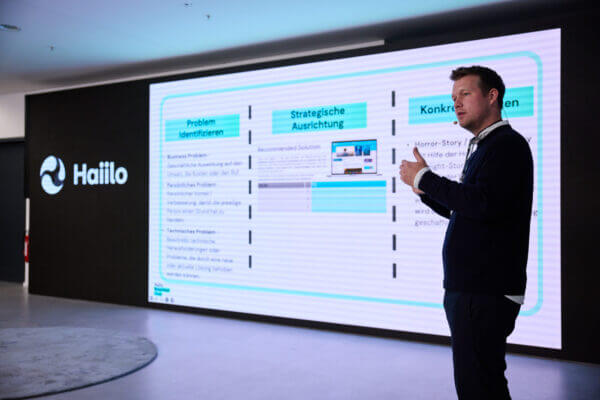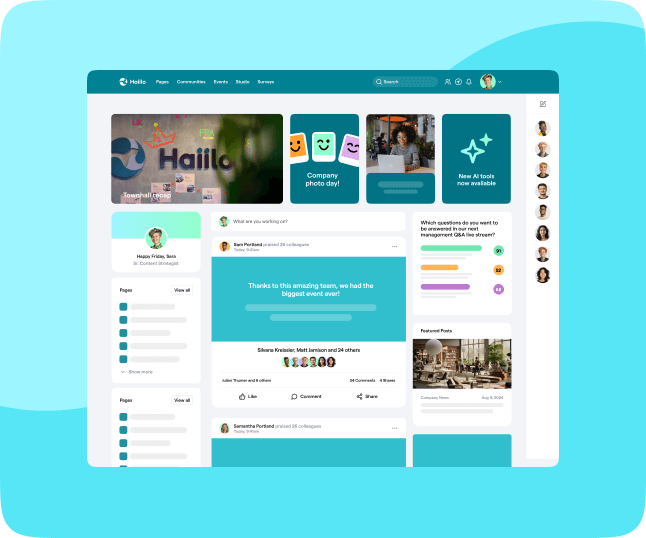by Florian Goebel, M. Sc Business Psychology & Global Events Specialist, Haiilo
Not long ago, a colleague said something that stuck with me: “I get everything done, but I don’t feel part of it anymore.”
That’s not burnout in the classic sense. It’s quieter, harder to spot, and more common than we like to admit. And the data backs it up.
Only 21% of employees are engaged at work, a decline from the year before. While in the UK, just 1 in 10 people say they’re engaged, costing an estimated £293 billion annually in lost productivity.
When people describe their work as “just getting things done,” they’re naming what researchers call disengagement. Tasks are finished, meetings happen, projects move forward, but the spark, the sense of connection, has gone. And left unchecked, that quiet disengagement is a real culture killer in organizations.
What self-determination theory tells us about motivation
Psychologists Edward Deci and Richard Ryan explored this problem decades before remote work or digital fatigue were factors. Their Self‑Determination Theory (SDT) is still one of the most influential frameworks for understanding motivation, precisely because it explains why people sometimes thrive at work – and why they sometimes switch to autopilot.
The theory says people have three fundamental psychological needs:
- Autonomy: the ability to make choices and shape how work is done
- Competence: the sense of being capable and effective
- Relatedness: the feeling of belonging and being valued by others
When these needs are met, motivation comes from within. People don’t just complete tasks, they want to contribute. But when these needs are blocked, motivation shifts. Work becomes compliance, not commitment.
💡Read: What Herzberg’s Two-Factor Theory teaches us about motivation
Why motivation struggles in modern organizations
In practice, most organizations want to support these needs, but the modern workplace can make it tricky.
- Autonomy is undermined when employees’ days are filled with meetings and constant pings, leaving no space to choose how or when to add value.
- Competence is hard to feel when feedback is rare or recognition is invisible.
- Relatedness is fragile in hybrid settings where teams connect through tools, but not always with each other.
Why communication is at the heart of engagement
If SDT gives us the framework, communication is the mechanism that makes it real.
- It gives clarity, so people know what’s happening and why.
- It creates visibility, so contributions and achievements aren’t lost in the noise.
- And it builds connection, so people feel part of something bigger than their to‑do list.
In other words, communication is about how autonomy, competence, and relatedness are experienced in daily work.
How Haiilo supports engagement
This is where Haiilo comes in. Not as a “solution to disengagement” per se, but as a platform that helps organizations align with the principles of SDT.
- Supporting autonomy: By giving employees the ability to create, contribute, and take part in dialogue, communication becomes participatory, not just top‑down.
- Making competence visible: Recognition, knowledge‑sharing, and feedback loops make individual and collective impact clear.
- Fostering relatedness: Stories, celebrations, and community spaces create belonging – even when teams are spread out.
Haiilo doesn’t prescribe what communication has to look like. It provides the space where communication can become intentional, inclusive, and human.
👀 See how Haiilo delivers real business impact
From theory to practice
The engagement crisis isn’t just about unhappy employees or disappointing survey results. It’s about organizations missing the opportunity to unlock the energy and creativity people can bring to work – if the conditions allow.
Self‑Determination Theory helps explain what those conditions are. And platforms like Haiilo make it possible to build them into the everyday reality.
3 ways to apply SDT in your workplace, tomorrow
- Make space for autonomy
Cut one unnecessary meeting a week and give that time back to employees to focus on self‑directed work. Small steps toward choice make a big difference. - Celebrate competence visibly
Share one story this week that highlights someone’s contribution, whether it’s a customer solution, a creative idea, or a quiet win. Visibility fuels motivation. - Invest in relatedness intentionally
Encourage managers to start meetings with a human check‑in or to spotlight peer recognition. Connection doesn’t need big events, it grows with daily rituals.
How can Haiilo help?
Haiilo combines intranet, advocacy, and insights into one effortless experience, helping you to strengthen teams, get more done, and build a digital workplace where people stay and succeed.
Because when your workplace is connected, great things happen






